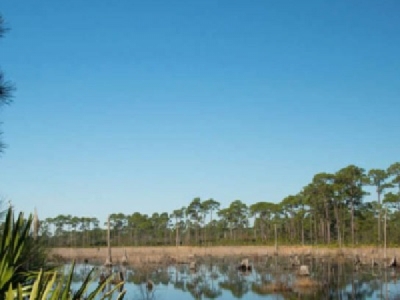
Posted on November 26, 2018
The National Fish and Wildlife Foundation (NFWF) has approved a $49 million plan to fund eight coastal Alabama restoration projects using criminal penalties assessed to BP and Transocean for causing the 2010 Deepwater Horizon oil spill.
As one of the various BP funding streams, NFWF’s Gulf Environmental Benefit Fund has already sent $200 million to coastal Alabama that, according to Alabama Department of Conservation and Natural Resources (ADCNR) Commissioner Chris Blankenship, has funded 32 coastal projects.
“These projects will significantly enhance long-term restoration and protection of our natural resources and will ensure the sustainability and resiliency of our coastal ecosystem,” he said.
The Gulf Environmental Benefit Fund is one of the only oil spill funding streams controlled entirely by the federal government, though state officials and Alabama residents have been able to submit project proposals for NFWF to consider.
Several projects in the latest group of allocations continue efforts already underway in the state, including a $22 million allocation to the state’s prolific artificial reef program. Over the past 15 years, ADCNR has placed hundreds of structures in coastal waters, but officials say “subsidence, storm damage and other factors” have caused Alabama’s existing artificial reefs to deteriorate over time.
Land acquisition efforts at the Bon Secour National Wildlife Refuge on the Fort Morgan peninsula, which has been identified by NFWF as one of its highest priorities in Alabama, will continue in the latest round of funding. In 2017, NFWF approved $5.9 million for the acquisition of a 251-acre property near the refuge. This year, they added another $4.4 million to purchase and restore 236 acres of estuarine and forested shrub wetlands that, according to Gov. Kay Ivey’s office, are “under significant and consistent threat of commercial and residential development that would result in loss of habitat and negatively impact living coastal and marine resources.”
Another $1.5 million will go toward completing engineering and design plans for the creation of new wetlands near Bon Secour to help treat urban runoff impacting downstream fisheries and improve habitat quality in areas historically serving as “Alabama’s most significant and productive shellfish habitats and nursery areas for juvenile finfish.”
“Alabama’s Gulf Coast is of great ecological importance to our state, and it is imperative we protect and restore those natural resources harmed by the Deepwater Horizon oil spill,” Ivey said in a release. “We are improving our water quality in the Bon Secour River and Mobile Bay, bolstering our fish populations with the expansion of artificial reefs and ensuring resilience along our coastline.”
The second most expensive project approved in 2018 is a $16.5 million marsh restoration effort at Lightning Point at the mouth of the Bayou La Batre River. Once completed, the project will have added approximately 28 acres of coastal marsh and 1.5 miles of breakwaters. It is also expected to help protect 127 acres of sensitive coastal habitat purchased by Alabama’s Forever Wild Land Trust and the city of Bayou La Batre using previous NFWF allocations.
Other 2018 NFWF projects include:
• Multifaceted Fisheries and Ecosystem Monitoring in the Gulf ($2.4 million) — This project will expand the temporal and spatial coverage for monitoring the long-term sustainability and recovery of marine resources into its fifth and final year. Alabama’s Marine Resources Division will work collaboratively with Florida and Mississippi state resource agencies, the University of South Alabama and the Dauphin Island Sea Lab to continue to implement standardized fishery independent and dependent surveys for broad scale data.
• Restoration of the North Side of Dauphin Island ($329,000) — This project will restore beach and marsh habitat on the north side of Dauphin Island to enhance the barrier island’s resilience in future storms and improve habitat for shorebirds. Specifically, the project aims to fill borrow pits that were excavated to supply sand for emergency barriers built along Gulf-facing beaches on Dauphin Island during the Deepwater Horizon oil spill.
• Dauphin Island Causeway Shoreline Restoration Engineering & Design ($250,000) — This project will fund the engineering and design of breakwaters to enhance, protect and improve the resiliency of marsh and oyster habitat adjacent to the Dauphin Island Causeway.
• Deer River Coastal Marsh Stabilization and Restoration ($750,000) — This project will complete engineering and design plans to stabilize and restore the shoreline and intertidal salt marsh at the mouth of Deer River, adjacent to the Theodore Industrial Canal and Mobile Bay. In the past two decades, approximately nine acres of productive intertidal marshland and shoreline have been lost due to erosion from heavy storms, tides and ship wakes. Once designed and constructed, this project will stabilize and enhance up to 5,600 feet of shoreline along Mobile Bay that will protect more than 275 acres of existing priority coastal saltmarsh.
Source: Lagniappe





